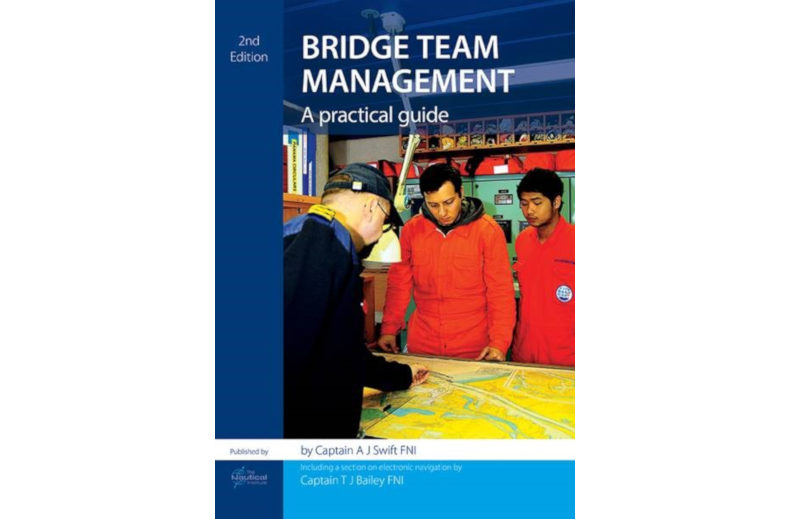Bridge Team Management: A Practical Guide - 2nd ed
Price for non-members: £86.00
Price for members: £60.20
Code: 0091
ISBN: 978 1 870077 66 8
Release year: 2004
Weight: 450 grams
About Bridge Team Management
Foreword
Preface
Acknowledgements
The bridge operations programme
Contents
Chapter 1: Bridge Team Management
Chapter 2: Passage Appraisal
Chapter 3: Passage Planning
Chapter 4: Executing the Passage/Voyage Plan
Chapter 5: Monitoring the Ship’s Progress
Chapter 6: Teamwork
Chapter 7: Navigating with a pilot on board
Chapter 8: Navigating with integrated bridge and electronic chart systems
Chapter 9: Guidance on keeping a navigational watch with reference
Chapter 10: IMO Resolution A 893(21) Passage Planning with commentary
Appendix I: Watchkeeping arrangements and principles to be observed as defined in STCW’95 Code Section A-VIII/2
Appendix II: Upkeep of the chart outfit
Glossary of abbreviations and words
The Bridge operations Programme
Index
Captain A J Swift FNI
The late Captain A J Swift FNI served 18 years at sea, including five years in command, before joining the Navigation Department of Brunel Technical College, Bristol.
He transferred to the Simulator Section at Warsash in 1980 and specialised in the use of simulation to reinforce bridge team management. In common with the other members of the section, he kept his practical experience updated by regularly returning to sea in an observing role on vessels of all types and by riding with pilots in major British ports. He retired in 1999.
He conducted research into the use of manned models, prepared a number of company manuals and completed a variety of research projects into shipping and bridge operations. In retirement he continued to conduct seminars on bridge team management in conjunction with the West of England P&I Club in Greece, Turkey, Korea and Japan.
Captain Swift was a Fellow of The Nautical Institute, a member of the Southampton Master Mariners Club and of the Royal Society for the Prevention of Accidents.
Captain Trevor Bailey FNI
Captain Trevor Bailey FNI is a Vice-President and Fellow of The Nautical Institute, a member of its Executive Board and chairman of its Technical Committee. He is a Younger Brother of the Corporation of Trinity House and has been a Member of the Honourable Company of Master Mariners since 1994 and was elected to the Court of Assistants in April 2002.
Trevor started his seagoing career in 1971 with BP Tanker Co Ltd and gained his Master’s Certificate in 1982. He was promoted to Master in 1984.
After service in tankers, container and ro-ro container vessels he joined Sealink British Ferries in 1988. He served aboard conventional vessels and various high-speed craft, serving as Master and as Senior Master from 1992. Latterly he was the first Training Master on board HSS Stena Explorer.
In 1998 he left Stena Line and established YG Consultants, an independent marine consultancy. Areas of business and expertise include electronic charts and integrated bridge systems, and Trevor regularly delivers operator training for Sperry Marine on its bridge equipment. YG Consultants has also had close involvement with the ISPS Code, the ISM Code, maritime law and claims, high-speed craft, life-saving appliances and safety training.
From September 2000 to the end of January 2001 he sat as one of two nautical assessors on the formal inquiry into the collision on the River Thames in August 1989 between the dredger Bowbelle and the passenger vessel Marchioness.

